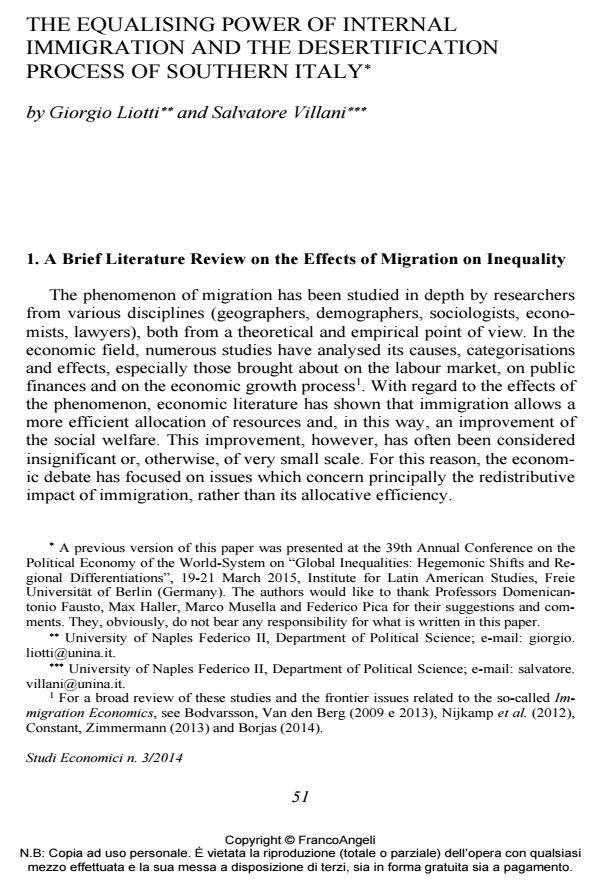The equalising power of internal immigration and the desertification process of southern Italy
Journal title STUDI ECONOMICI
Author/s Giorgio Liotti, Salvatore Villani
Publishing Year 2015 Issue 2014/114
Language English Pages 27 P. 51-77 File size 235 KB
DOI 10.3280/STE2014-114003
DOI is like a bar code for intellectual property: to have more infomation
click here
Below, you can see the article first page
If you want to buy this article in PDF format, you can do it, following the instructions to buy download credits

FrancoAngeli is member of Publishers International Linking Association, Inc (PILA), a not-for-profit association which run the CrossRef service enabling links to and from online scholarly content.
According to some scholars, immigration can have a relevant role in the reduction of inequality. It has happened in the past and it may also happen in the future, as it is possible and desirable. However, migration in itself does not resolve definitely the issue of the inequalities and, moreover, in light of the recent studies on the effect of immigration, the exigency of additional in depth research on the impact of this phenomenon on regional disparities and income inequalities has become evident. The present paper faces these relevant issues, focusing on the regional impact of internal migration and attempting to demonstrate, with reference to the Italian case, how out-migration can increase income inequalities, thus hindering economic growth and exacerbating regional disparities, while immigration can reduce income inequalities and mitigate economic imbalances, according to the hypothesis of skilled immigration equalising, formulated in 2008 by Kahanec and Zimmermann.
Keywords: Income Inequality, Migration, Economic Growth, Redistribution through Immigration.
Jel codes: C23, E64, J15, R10
Giorgio Liotti, Salvatore Villani, The equalising power of internal immigration and the desertification process of southern Italy in "STUDI ECONOMICI " 114/2014, pp 51-77, DOI: 10.3280/STE2014-114003